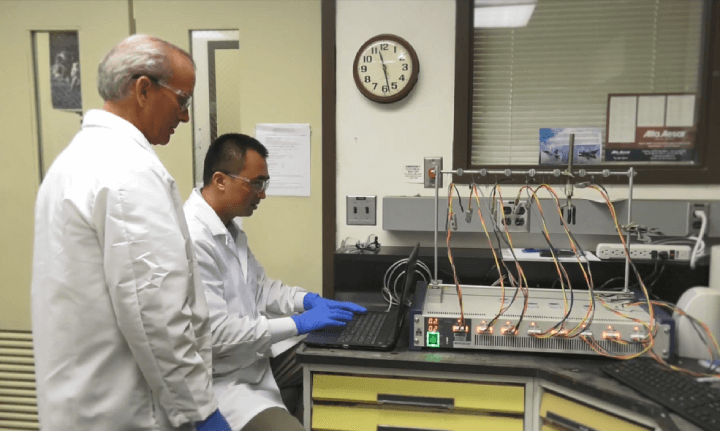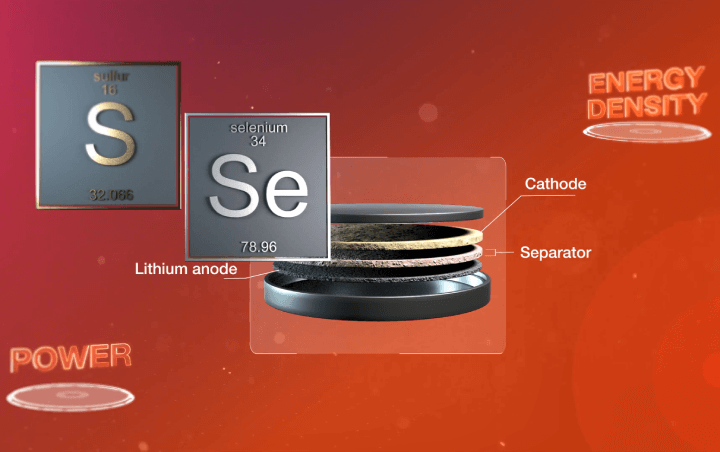NASA's Sulphur Selenium Battery: Electric Aircraft's Future?
22-08-2023 | By Liam Critchley
NASA—the National Aeronautics and Space Administration—is best known for sending spacecraft to the moon and other unmanned spacecraft to remote parts of our solar system. However, they are involved with many aspects of aerospace research, and the development of electric aircraft has gathered a lot of interest in recent years—much like electric cars have.
Like electric cars, one of the cornerstones of any electric vehicle (EV) research is battery technology, as this is the powerhouse of the vehicle and one of the most important aspects to consider. This is especially true for electric aircraft batteries which have different requirements to electric land vehicles. Whereas the batteries that go in cars are typically heavy, this is not feasible for aircraft where lightweight components are a key part of engine and fuel consumption performance. In any case, if the components are too heavy, then the aircraft will struggle to get off the ground. The current crop of batteries used in electric cars are far too heavy for electric aircraft, so other solutions have been sought.
Challenges and Innovations in Electric Aircraft Batteries
Safety is another key aspect of battery research, and while Li-ion batteries have a good level of energy density and good stability, they tend to catch fire in high-power applications. This is why solid-state batteries are of interest because the electrolyte inside the battery is solid—instead of a liquid or a semi-liquid (like a gel)—so they are less likely to catch fire, overheat, or lose their charge over time. For aerospace applications, safety is paramount, and you don’t want an aircraft catching fire mid-flight, where it could crash-land unexpectedly onto the public below.
Researchers at NASA have now developed a sulphur selenium solid-state battery that is much lighter and safer than the Li-ion batteries used in electric cars, and the performance is also better than a lot of batteries in use today. The research has been going on for a few years now and is part of a NASA initiative known as Solid-state Architecture Batteries for Enhanced Rechargeability and Safety (SABERS).

SABERS is at the forefront of crafting a solid-state battery tailored for aviation needs. The accompanying photo showcases NASA scientists John Connell and Yi Lin (seated) employing a cyclic voltameter to assess the efficacy of a newly-developed cathode, a pivotal component of their solid-state battery. Source: NASA.
NASA's commitment to sustainable aviation has led to the exploration of solid-state batteries for aviation applications, including electric-propelled aircraft and Advanced Air Mobility. Unlike the industry-standard lithium-ion batteries, these solid-state batteries do not contain liquids, eliminating risks such as overheating, fire, and loss of charge over time. The SABERS initiative, which stands for Solid-state Architecture Batteries for Enhanced Rechargeability and Safety, has been at the forefront of this research.
The research to date has been a joint venture between NASA and several partner organisations—including Georgia Tech, Argonne National Laboratory, and Pacific Northwest National Laboratory—and it has already gathered a lot of interest from government bodies, industry, and academic institutions.
Rocco Viggiano, the principal investigator for SABERS at NASA’s Glenn Research Center, mentioned, "We’re starting to approach this new frontier of battery research that could do so much more than lithium-ion batteries can. The possibilities are pretty incredible." This sentiment echoes the potential of the sulphur selenium solid-state battery in revolutionising the aerospace industry.
A New Sulphur Selenium Solid State Battery
There are many reasons why new battery chemistries are needed for electric aircraft. The batteries need to store huge amounts of energy to power aircraft for long flights, but there also need to be able to discharge it quickly. For electric aircraft to work effectively, the batteries used need to be able to hold and discharge large amounts of energy—much more than the batteries used in cars—while being much lighter than existing battery technologies.
Requirements and Advantages of New Battery Technologies
Given that aircraft are subjected to much more extreme environments, they also need to be more robust than the batteries used on ground vehicles. This is why the battery direction has also gone towards solid-state batteries, as they don’t catch fire and overheat as easily and can perform better in stressful environments.
To build a battery that meets the needs of the electric aircraft sector, the researchers turned to materials that have not yet been used together in battery systems. These are sulphur and selenium. Over the past year, the researchers have achieved some significant results, including increasing the battery’s discharge rate by a factor of 10 and then by another factor of 5 after further developments. Given that the discharge rate is an important factor for aircraft, these advancements are highly significant.
Innovations in Battery Design and Safety
But these are not the only beneficial aspects of the fabricated battery. The choice to use new materials has brought about the chance to create different architectures and battery designs. Instead of housing each individual cell inside its own casing (as you see with normal liquid electrolyte batteries), all the battery cells were stacked vertically inside one casing. The ability to change the construction and packaging of their battery architectures led to an increase in the energy density of the battery systems while reducing the overall weight of the battery—two more key aspects that have shown great promise for aircraft with this new system.

The graphic provides a glimpse into the inner workings of a cell from SABERS's solid-state battery, predominantly composed of sulfur and selenium. In contrast to lithium-ion batteries, these cells are designed to be layered atop each other without the need for individual casings. Source: NASA.
As mentioned above, the safety of batteries for electric aircraft is vitally important, and solid-state batteries are typically safer, but they still need to be tested. The researchers tested the batteries under different pressures and temperatures and found that they can operate in temperatures that are almost twice as hot as Li-ion batteries. It was also found that the batteries don’t require as much cooling technology as Li-ion batteries. The researchers are currently performing more tests on the batteries to see how they perform at even higher temperatures.
While the research has been going on for a few years, the main objective of SABERS this year was to showcase how the different property of this unique battery meets the energy and safety targets required by the aerospace industry. The other key driver of the latest research was to demonstrate that the battery can operate in realistic conditions at maximum performance. The research has continued to exceed its goals, and it’s potentially ushering in a new frontier of battery research.
References:
-
NASA. (Oct 7, 2022). NASA Solid-State Battery Research Exceeds Initial Goals, Draws Interest. NASA.gov.
-
CleanTechnica. (14 July 2023). Sulfur Selenium Solid-State Battery from NASA Breaks Energy Storage Boundaries. CleanTechnica.com.

